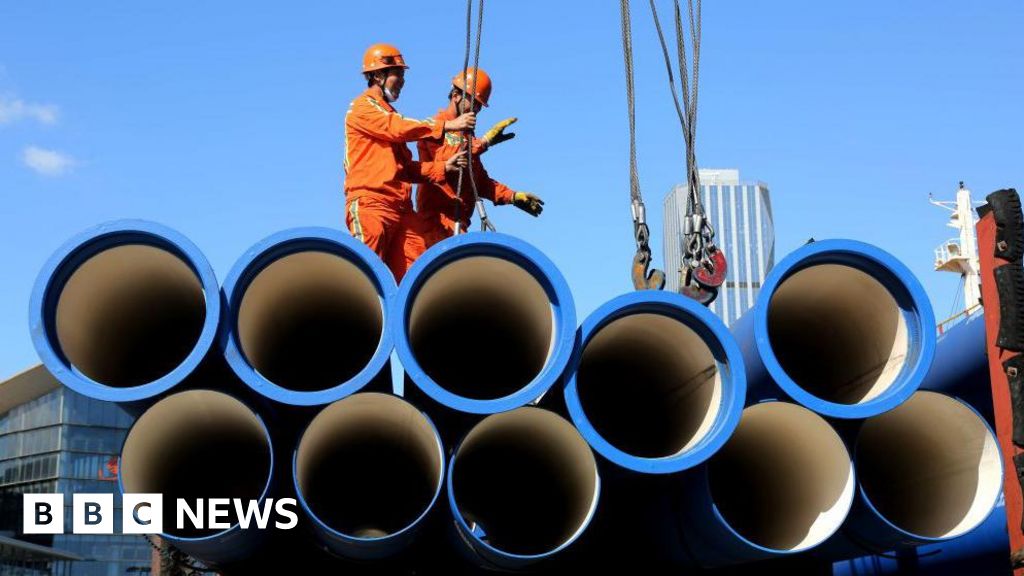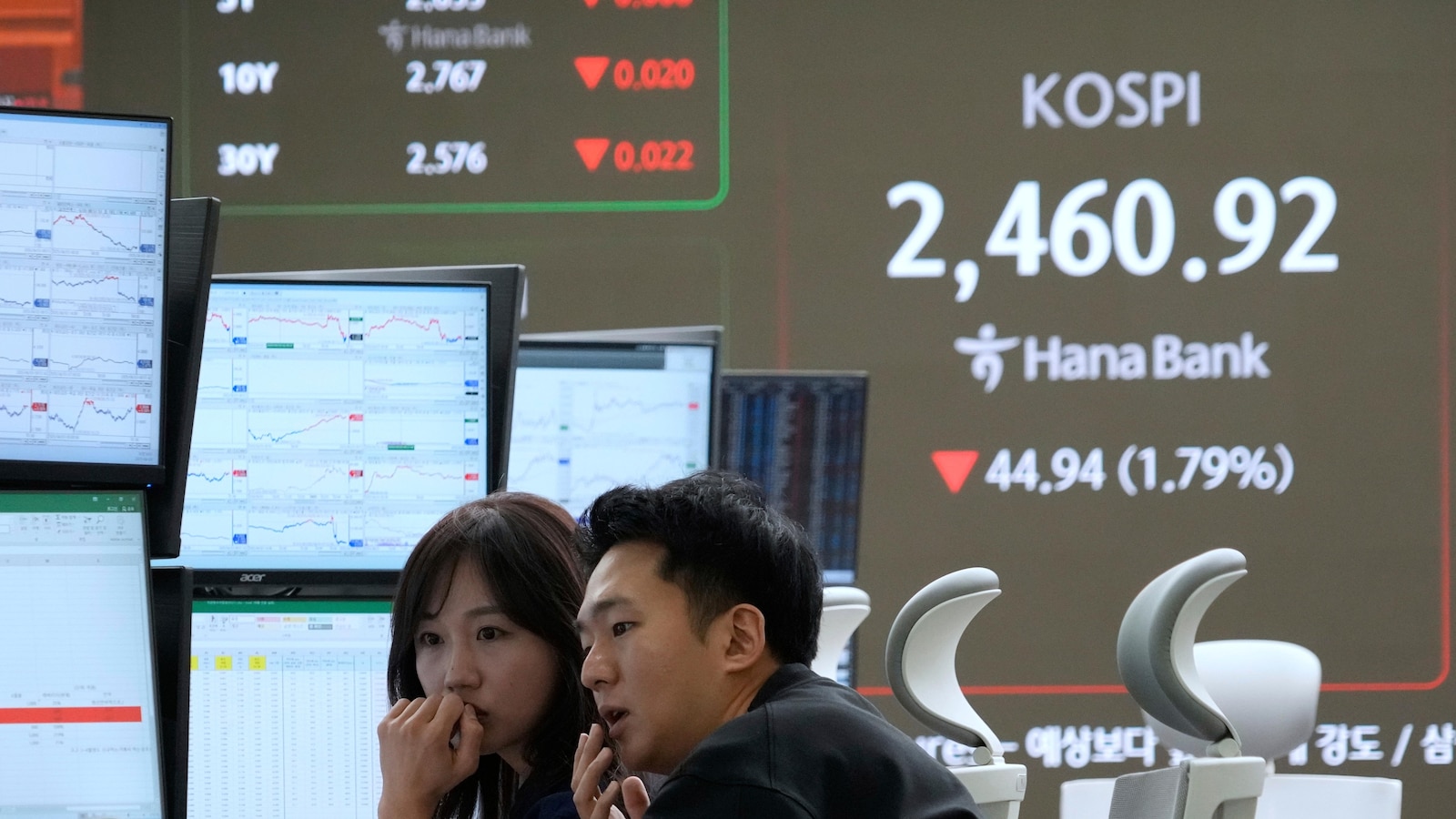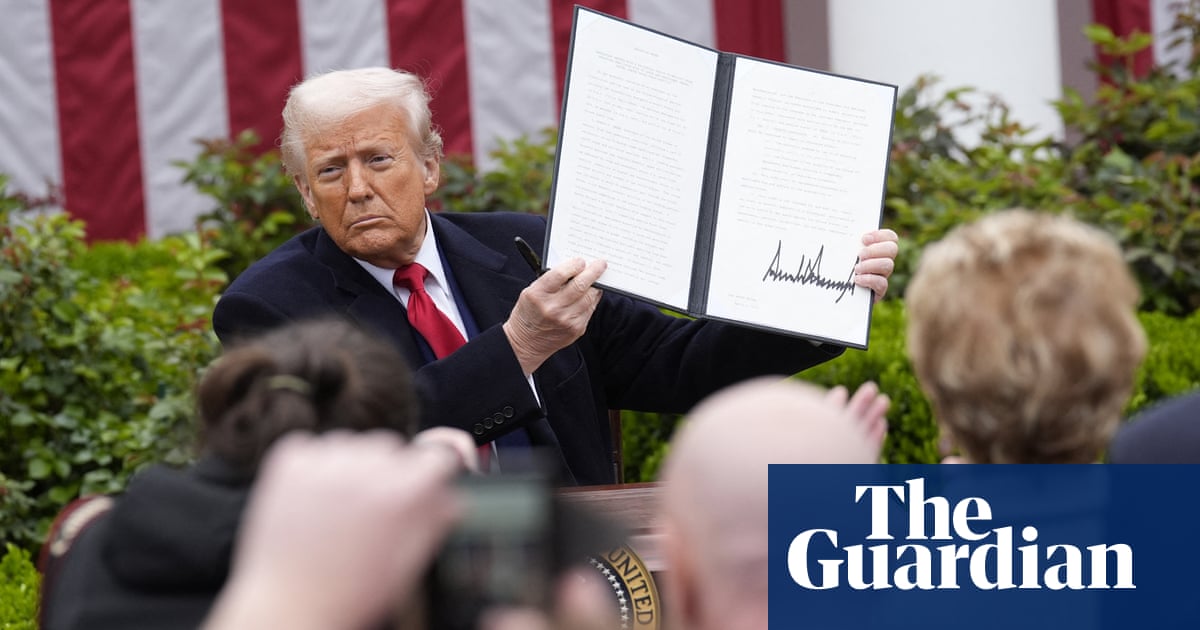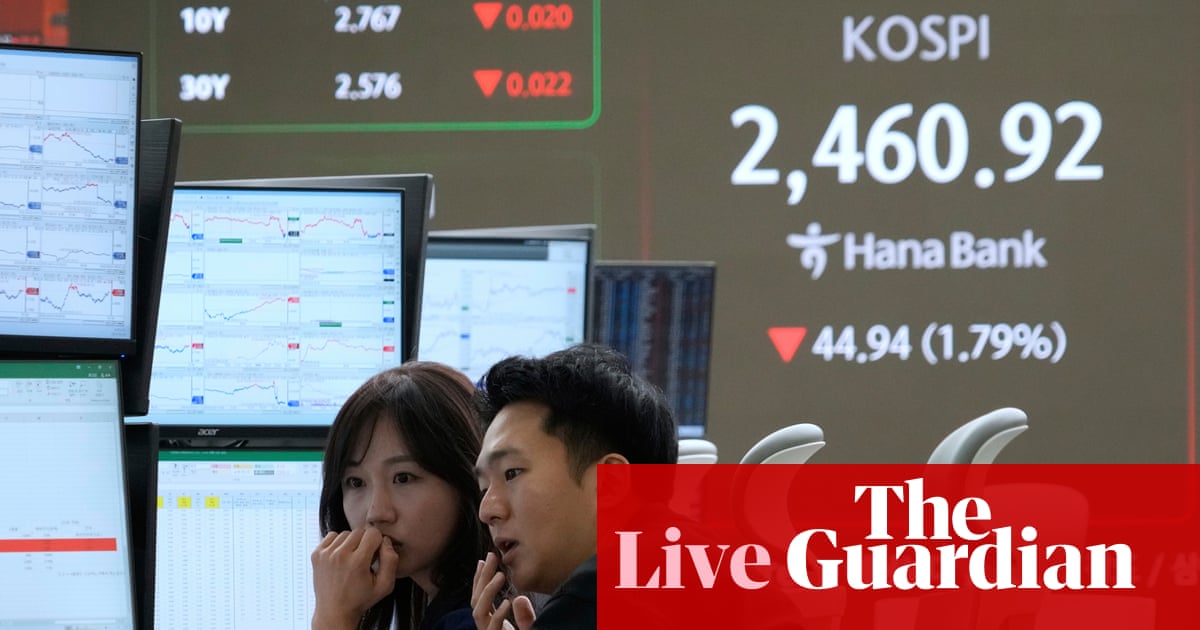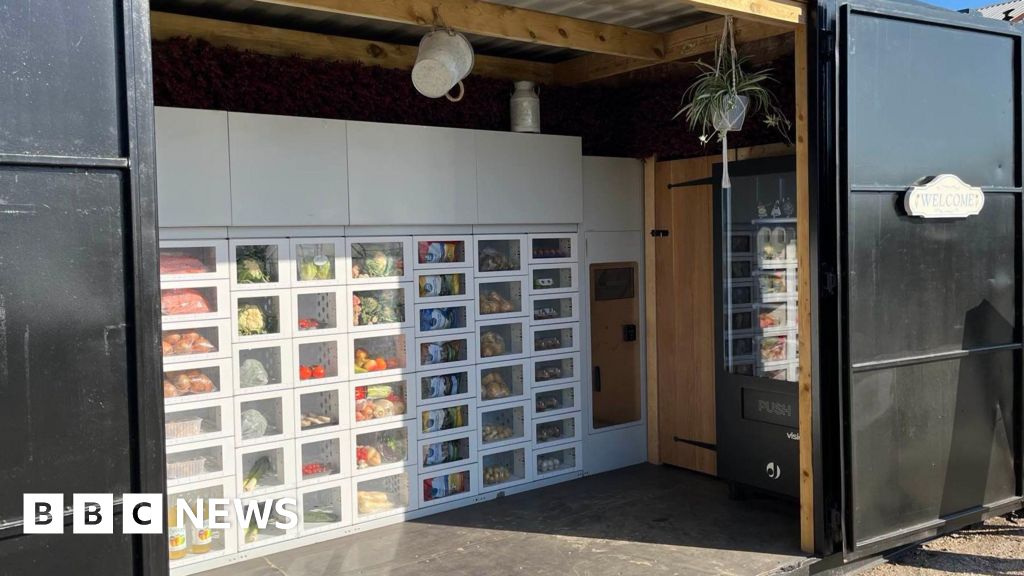
Global investors cautious, gold rises as markets await ‘liberation day’ tariff announcement – business live
Key events
Ipek Ozkardeskaya, senior analyst at Swissquote Bank, said that after the US manufacturing data yesterday,
The Fed is still expected to deliver its next rate cut in June – and not before – but things could change rapidly depending on how much Trump policies will hit the US economy.
Today’s tariff announcement could give a fresh direction to global markets, but it would be naive to think that today will mark the end of the tariff shenanigans. More likely, it marks the start of another phase of uncertainty and turmoil. The real risk isn’t just the tariffs themselves but the constant threat of escalation, reversals, and retaliation.
She added:
Good news for investors is that an economic slowdown is not necessarily synonym of market selloff, as the Fed would step in by lowering rates and buying bonds to ensure financial stability. Inflation – on the other hand – is expected to be one-off and hopefully heal itself with economic slowdown.
The problem is that the supply-side shocks tend to be inflationary – as we saw during the pandemic times. And the tariffs could disrupt the global supply chains and bring inflation back before giving the Fed time to reach its 2% target.
For now, investors show an increased appetite for bonds – and that despite the expectation of a further rise in global debt levels. As such, the US 10-year paper is amassing haven flows – the 10-year yield fell to as low as 4.13% yesterday from around 4.80% peak reached by mid-January.
Similarly, the 10-year European government bond yields eased by almost 30bp since their mid-March peak. In equities, the European indices rebounded and the Stoxx 600 recovered by more than 1%. But the futures point at little appetite before the tariff announcement.
Eurozone bond yields are little changed ahead of the tariff announcement. Germany’s 10-year bond yield, the benchmark for the eurozone, was flat at 2.685%.
Introduction: Global investors cautious, gold rises as markets await ‘liberation day’ tariff announcement
Good morning, and welcome to our rolling coverage of business, the financial markets and the world economy.
It’s world tariff day. Donald Trump is set to announce his latest round of tariffs at 4pm ET (8pm GMT), threatening to unleash a global trade war on what he has dubbed “liberation day”.
Asian stocks were little changed after a choppy session, with Japan’s Nikkei ending the day 9 points higher. Hong Kong’s Hang Seng dipped by 0.2% and the South Korean Kospi fell by 0.6% while the Chinese markets were unchanged.
Earlier on Wall Street, the S&P 500 finished 0.38% higher while the Nasdaq rose by 0.87% and the Dow slipped slightly.
Gold is trading 0.2% higher at $3,116.2 an ounce, after hitting a new all-time high of $3,148.8 an ounce yesterday, as investors rush into safe assets.
Ben Bennett, Asia-Pacific investment strategist at Legal & General Investment Management, told Reuters:
Nervousness is the dominant sentiment right now.
Investors are hoping for some clarity… But tariffs are already weighing on business sentiment, and this will probably feed through into lower global economic activity in the coming months.
The US president spent Tuesday “perfecting” the trade plan, according to his press secretary Karoline Leavitt.
The plans for further tariffs have rattled investors, company executives and economists, and triggered heated rows with the US’s largest trading partners. Among them, Canada’s prime minister, Mark Carney, has called the tariffs “unjustified” and pledged to retaliate, and the European Union has said it has a “strong plan” to retaliate.
According to the Washington Post, Trump plans to impose 20% tariffs on most goods imported to the United States, rather than targeting certain countries or products.
This is clearly not good for economies around the world. A new report from Aston Business School has shown that if Trump imposed 25% tariffs, triggering retaliatory action, it could cause a $1.4tn hit to the world economy.
Yesterday, survey data showed US manufacturing contracted in March after growing for two consecutive months, while factory gate inflation jumped to the highest level in nearly three years amid mounting anxiety over tariffs on imported goods.
The Agenda
-
12.15pm GMT: US ADP Employment change for March
-
2pm GMT: US Factory orders for February
-
8pm GMT: Trump to announce latest US tariffs





